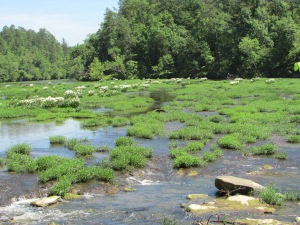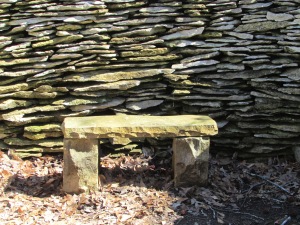Southern Foodways Alliance (www.southernfoodways.org) was born in Birmingham in 1999, spearheaded by a letter from author John Egerton inviting fifty representatives of every facet of southern food and food culture to convene at the Southern Living magazine headquarters. At that meeting, they chartered the organization, named John T. Edge to be the director, and SFA became a part of the Center for the Study of Southern Culture at the University of Mississippi.
Frank and Pardis Stitt hosted their fellow founders at Highlands Bar and Grill (www.highlandsbarandgrill.com) on that first night.
Since then, SFA has become a major advocate for dispensing knowledge and research into all aspects of food culture of the American South through symposia, oral histories, films, and publications such as the award-winning quarterly, Gravy. SFA uses food culture to examine social issues of past, present, and future. Its events are inspiring, challenging, and community-building. The philosophy of the organization makes a place at the table for everyone. And, needless to say, there’s always good food to be had.
Birmingham is the permanent site for SFA’s annual winter symposium. The 2019 theme is “Food Is Work.” With the Birmingham symposium, the SFA launches a year-long examination of the labor that transpires at all levels of food service and production.
The intrepid John T. Edge remains the director of SFA and he and the tireless staff serve as hosts for the event. Edge’s generosity, humor, and razor-sharp observations are the ideal representation of everything the organization has come to mean for the region and the wider food culture. John T. has the uncanny ability to make the connections, whatever and wherever they might be. His ability to remember people is impressive, as is his infectious curiosity.
Good People Brewing (www.goodpeoplebrewing.com) was the site of the reception on Friday night before the symposium. Feizal Valli of Birmingham’s funky and ersatz Atomic Lounge (www.theatomiclounge.com) was serving beverages built from a base of Good People’s Coffee Oatmeal Stout. Critics’ favorite John Hall, of Post Office Pies (www.postofficepies.com), offered a tasty bite of a red snapper crudo with grapefruit, radish, celery, and mint.
The main event on Saturday was at Haven (www.eventshaven.com), an event space on Southside. Attendees were greeted with treats from two Birmingham stalwarts – a bag containing two tasty Hero Doughnuts (www.herodoughnuts.com) and freshly brewed Royal Cup Coffee (www.royalcupcoffee.com) sourced from Kenya. Each participant took home a bag of the coffee in its bright purple bag marked ROAR.
The symposium’s morning presentations were mostly Birmingham-centric and a good introduction to the city for the many people who were visiting for the first time. After the requisite greetings by SFA staff, Feizal Valli offered tasting notes for the beverages that would be offered at the closing happy hour.
The morning’s presentations began with poetry by Birmingham native Ashley M. Jones, author of Magic City Gospel and the just-released dark // thing. The poetry Jones shared was based on food and food memory and was a contemplative start to a long day. Next, Pulitzer Prize-winning journalist John Archibald’s presentation, “The Labor of Birmingham,” began by focusing on Birmingham’s gritty industrial beginnings as an iron and steel center and the role of Greek immigrants in feeding “the city that was a melting pot that prospered because of melting pots.”
The presentation morphed into a paean to Birmingham-style hot dogs, which are hard to explain but are delicious and distinctive and are undeniably a “thing” in the Birmingham area. During Archibald’s Q&A, Frank Stitt recalled memories of bags of Birmingham tamales that his parents would bring back to Cullman after visits to the city in the mid-20th century. At that point, John T. Edge elaborated on Mississippi Delta tamale culture and how pockets of tamale culture are scattered throughout the region. That’s one of the great things about SFA – the tracks of one discussion always lead to a related train of thought for further exploration.
The final morning session was especially relevant to me as Ben and Ryan Ray, entrepreneurs of Millie Ray and Sons baked goods (www.millierayandsons.com), spoke with SFA’s Annemarie Anderson. My mother had served Millie Ray’s orange rolls the night before and had expressed interest in the story of the company and its namesake. I had recently read that Millie Ray had died, so it was a happy coincidence to hear her sons tell the story of their mother and her baking first-hand the very next day. Their story of a food company that started in their mother’s home kitchen making orange rolls for her garden club in 1979 was a lovely way to end the morning; all of my mother’s questions were answered, to be shared with her later that day.
The afternoon began with the premiere of Ava Lowrey’s latest SFA short film, “Mac’s One Stop,” about a service station / convenience store / lunch counter in downtown Birmingham. Mac’s, in the middle of the medical center, is a place I’ve passed without notice hundreds of times. Now, thanks to the SFA doing what they do, I will pass it – and probably stop by – with a new appreciation of what it means to food and to its community. SFA’s many outreaches are valuable tools for illuminating the stories that are off the beaten path or, in the case of places like Mac’s, hiding in plain sight.
At lunch time, the always innovative SFA staff decided to try something: Each symposium-goer’s nametag was stamped with an image from a food group: carrot, catfish, chicken, cow, pig. When it was time to go in to lunch, we were lined up by food group in an effort to encourage networking. Of course, my food group was the last to be called, but the experiment worked as I met and had a nice conversation with an engaging young couple from Savannah, visiting Birmingham for the first time, and in the process of opening a tech device-free restaurant. I wish them all the luck in the world.
Lunch is always special at SFA events and is an opportunity for chefs to showcase their cuisine to a broad national audience. The 2019 winter symposium lunch was particularly special to me since it was provided by Rusty Tucker and his crew from Rusty’s Bar-B-Q (www.rustysbarbq.com) in Leeds, USA, just east of Birmingham. I sat with Rusty at last year’s winter symposium and have since been to his restaurant several times for some of the best barbecue in the area.
For the SFA meal, Rusty’s barbecue offerings included chicken, pulled pork, brisket, and – as a vegetarian option – jackfruit. Barbecued jackfruit was new to me and, apparently, to many of the other diners. It was hearty and delicious. The sides were excellent and traditional but Rusty’s distinctive touches raise them above the norm. For dessert, there was a silky banana pudding from pastry chef Beth Tucker, Rusty’s wife.
After lunch, I stopped by to view an exhibition of photographer Celestia Morgan’s thoughtful portraits of Birmingham people at work in various area eateries.
The symposium took a darker turn in the afternoon with sessions that addressed the realities and pitfalls of careers in the food industry. “Restaurants in Crisis,” moderated by Nashville-based pastry chef / writer Lisa Donovan, began with a litany of headlines documenting the recent fall of restaurant industry icons. After that sobering intro, Donovan addressed crisis and emergency management within the industry with psychologist Patricia Bundy and Melany Robinson of Birmingham-based Polished Pig Media. The discussion included hard statistics and even more difficult realities of the struggles behind the hospitality façade. It was difficult to hear, but necessary, with advice to benefit those in any field.
At the end, Robinson shared a simple but timely quote she had photographed on a sign outside an auto shop in Birmingham’s Homewood suburb: IN A WORLD WHERE YOU CAN BE ANYTHING / BE KIND.
Next, Hunter Lewis, editor in chief of Food and Wine magazine, had a conversation with Steve Palmer, restaurateur and managing partner of Charleston-based Indigo Road Hospitality Group (www.theindigoroad.com), overseeing close to two dozen discrete restaurants throughout the southeast. The session, “Evolution of the Restaurant Family Ideal,” explored Palmer’s evolution in the food industry and his philosophies for creating a restaurant concept and managing employees, including an admirable initiative to assist restaurant employees with home mortgages. The humility and passion of Palmer were striking, particularly when he discussed his founding of “Ben’s Friends,” a food and beverage industry support group for those with substance abuse and addiction problems.
During a break, after the Steve Palmer session, I told my journalist friend Bob that I may have “hit the wall” after two such probing and occasionally troubling sessions.
However, as is so often true with SFA events, the best was yet to come.
The final session of the day, entitled “Promises of a Female Led Restaurant,” featured the amazing and fearless Raleigh-based chef, Ashley Christensen (www.ac-restaurants.com). Christensen and her food made me a life-long fan after two exceptional dinners at the Friends of the Café dinners in Florence, Alabama. Christensen’s presentation was memorable and powerful as she passionately spoke about issues of identity, inclusion, and hope. It was a courageous and masterful presentation, laying bare the soul of a woman who cares about the communities she serves and about her own place within it.
Ashley Christensen had me on the edge of my seat, proud to be a witness.
At the end, the audience rose in prolonged ovation for the singular moment of a singular day.
We had a chance to catch our breath and say our goodbyes at the happy hour which closed the SFA’s 2019 Winter Symposium. Faizal Valli once again had his bar set up with an Atomic Lounge sign and a vintage ‘60s lamp that I envied for the memories it conjured. Alabama Peanut Company was set up to serve the roasted peanuts that have earned it a devoted following at the Peanut Depot (www.alabamapeanut.com) on Morris Avenue since 1907. Merry Cheese Crisps (www.merrycheesecrisps.com), a cheese straw in medallion form, were fetchingly displayed in cut glass trays to the side.
When I left Haven, Faizal was still busy shaking his newly minted “John T. Edge” cocktail, a Maker’s Mark-based concoction “garnished” with a John T. Edge removable tattoo.





























































